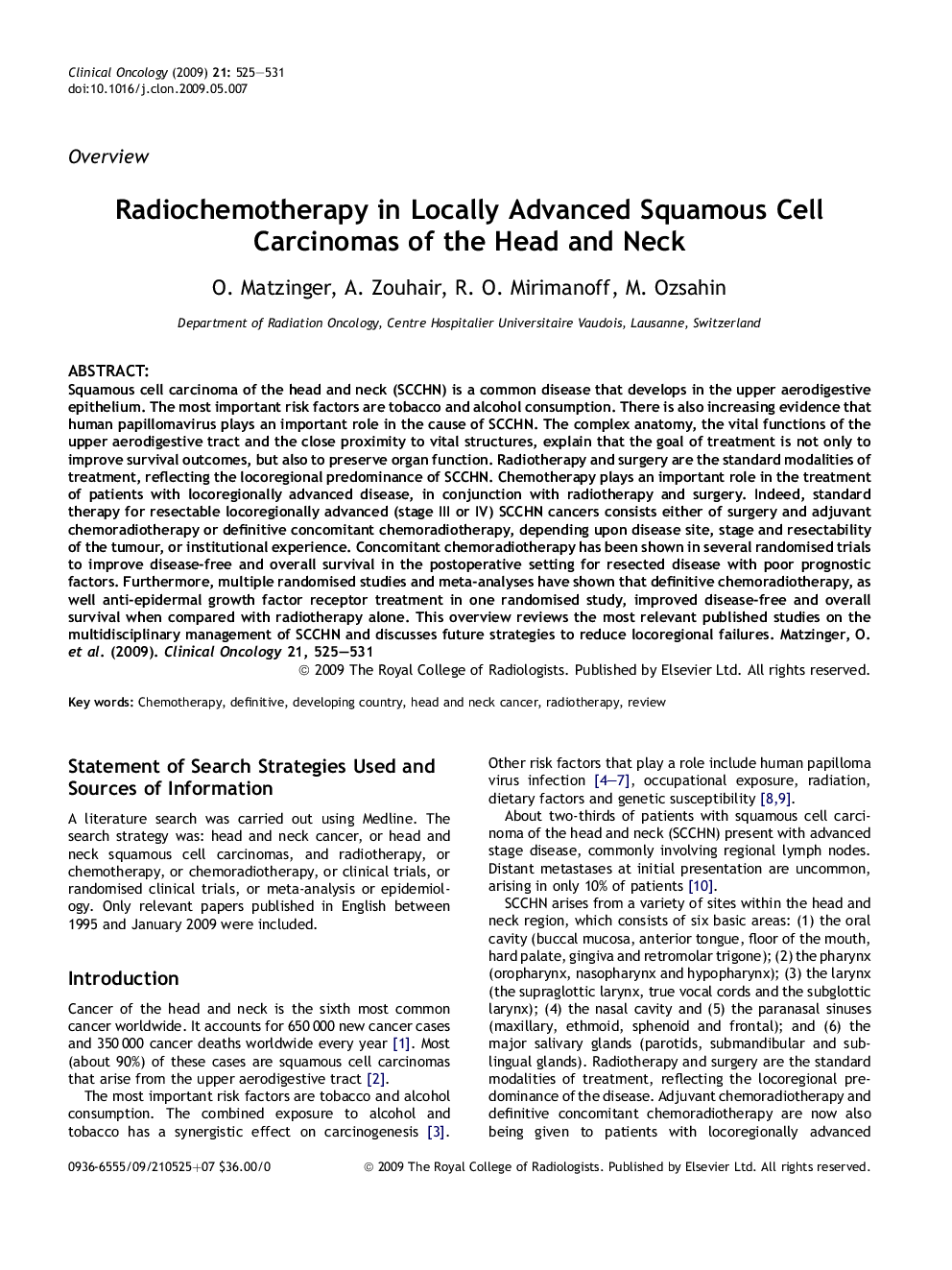| Article ID | Journal | Published Year | Pages | File Type |
|---|---|---|---|---|
| 5699219 | Clinical Oncology | 2009 | 7 Pages |
Abstract
Squamous cell carcinoma of the head and neck (SCCHN) is a common disease that develops in the upper aerodigestive epithelium. The most important risk factors are tobacco and alcohol consumption. There is also increasing evidence that human papillomavirus plays an important role in the cause of SCCHN. The complex anatomy, the vital functions of the upper aerodigestive tract and the close proximity to vital structures, explain that the goal of treatment is not only to improve survival outcomes, but also to preserve organ function. Radiotherapy and surgery are the standard modalities of treatment, reflecting the locoregional predominance of SCCHN. Chemotherapy plays an important role in the treatment of patients with locoregionally advanced disease, in conjunction with radiotherapy and surgery. Indeed, standard therapy for resectable locoregionally advanced (stage III or IV) SCCHN cancers consists either of surgery and adjuvant chemoradiotherapy or definitive concomitant chemoradiotherapy, depending upon disease site, stage and resectability of the tumour, or institutional experience. Concomitant chemoradiotherapy has been shown in several randomised trials to improve disease-free and overall survival in the postoperative setting for resected disease with poor prognostic factors. Furthermore, multiple randomised studies and meta-analyses have shown that definitive chemoradiotherapy, as well anti-epidermal growth factor receptor treatment in one randomised study, improved disease-free and overall survival when compared with radiotherapy alone. This overview reviews the most relevant published studies on the multidisciplinary management of SCCHN and discusses future strategies to reduce locoregional failures.
Related Topics
Health Sciences
Medicine and Dentistry
Oncology
Authors
O. Matzinger, A. Zouhair, R.O. Mirimanoff, M. Ozsahin,
